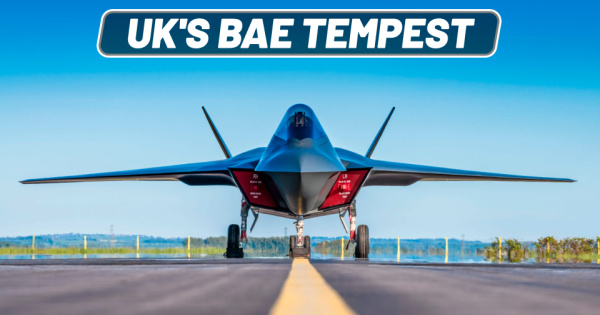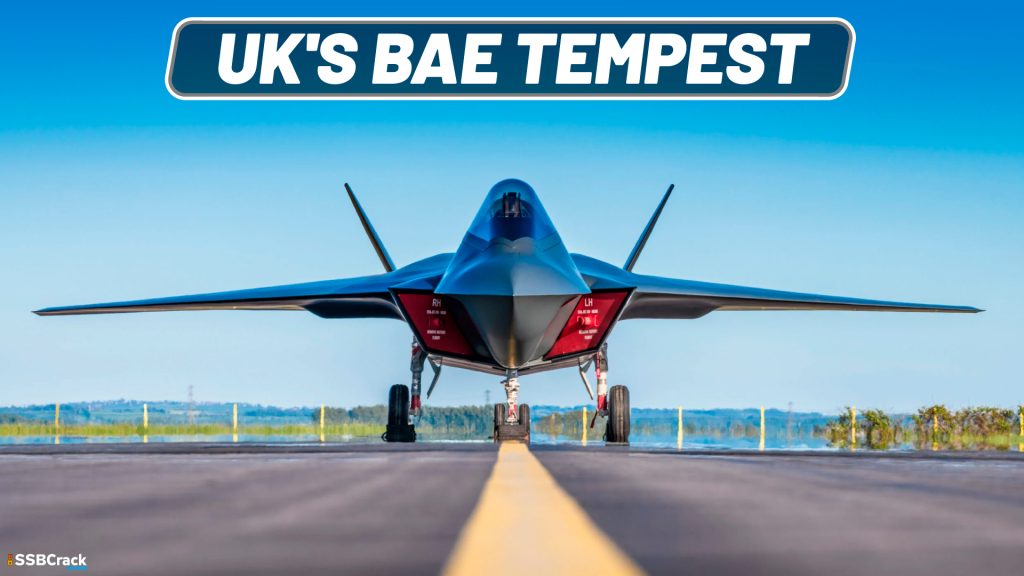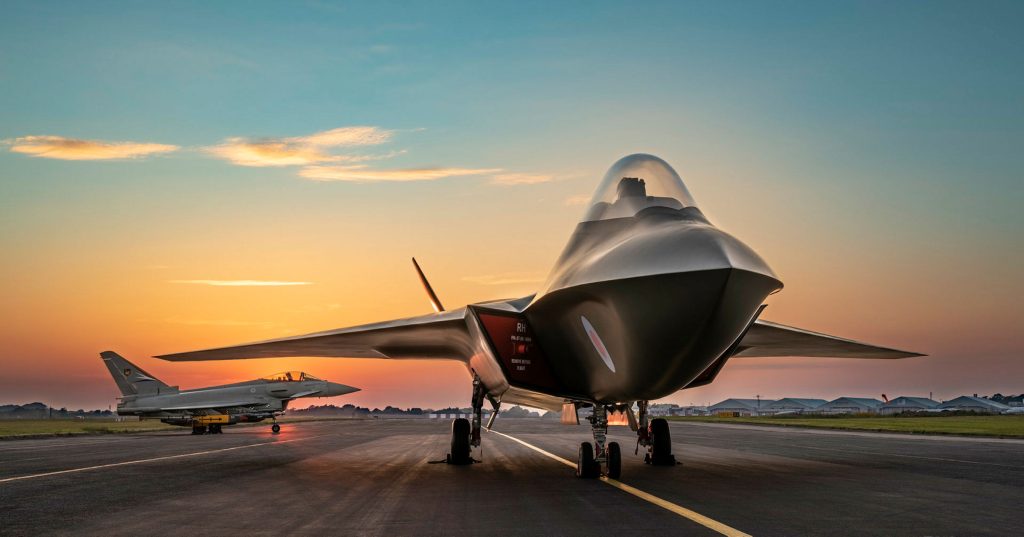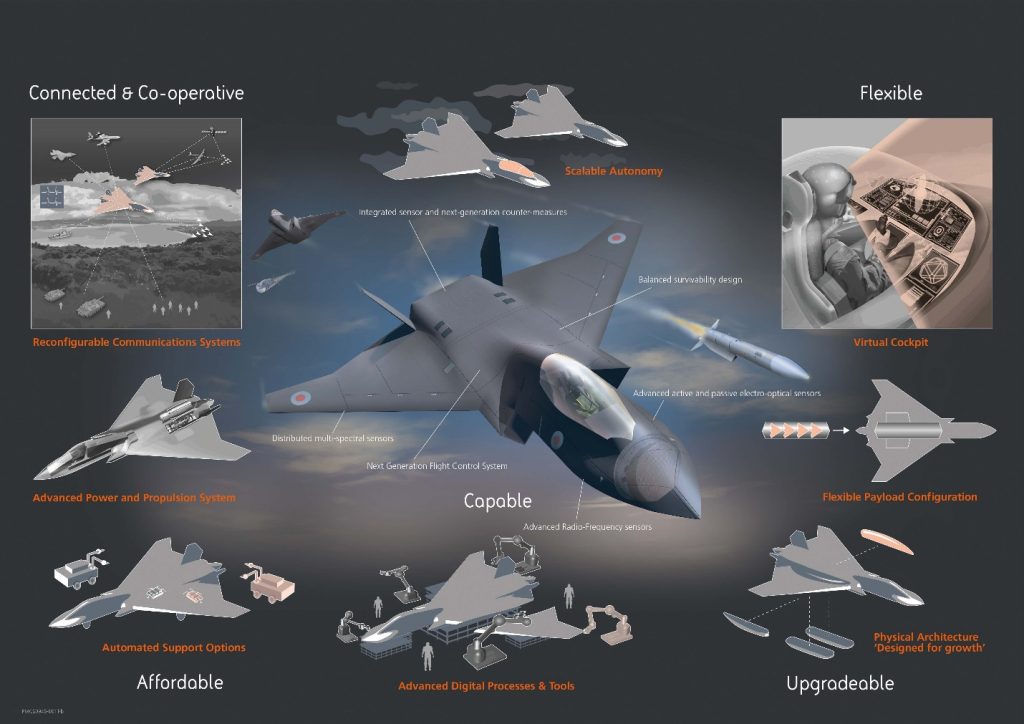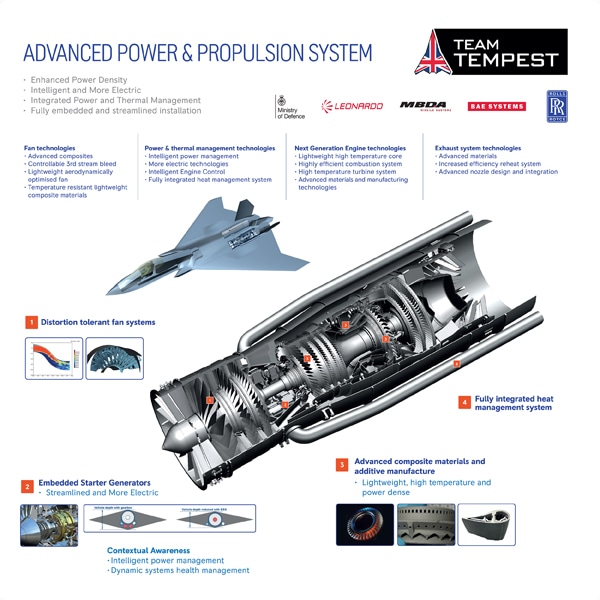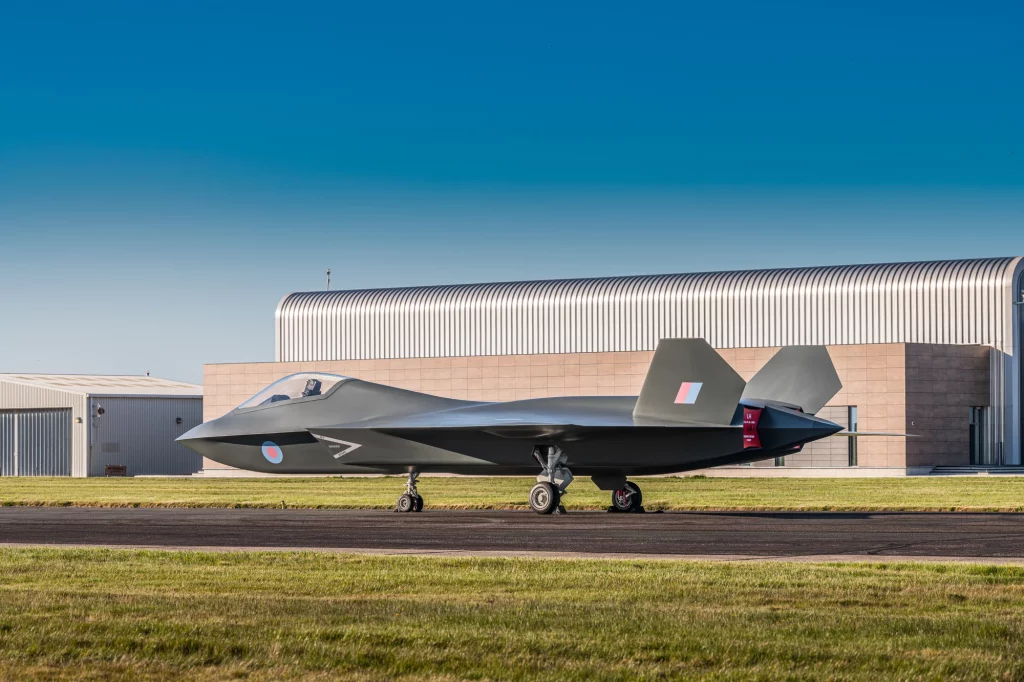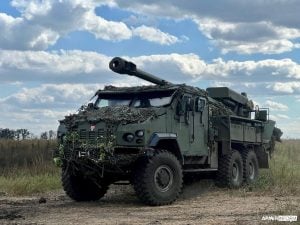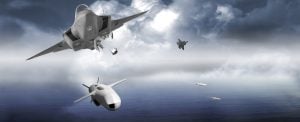The BAE Systems Tempest is a proposed sixth-generation fighter aircraft for the Royal Air Force being developed in the United Kingdom (RAF). The aircraft will gradually replace the Eurofighter Typhoon beginning in 2035. It is being developed as part of the Future Combat Air System (FCAS) program by Team Tempest, a consortium comprised of the Ministry of Defence, BAE Systems, Rolls-Royce, Leonardo, and MBDA UK. The British government intends to spend £2 billion on the project’s initial phase until 2025.
Britain, Italy, and Japan would collaborate to develop a new sixth-generation fighter. There had been rumors of the project under the so-called Global Combat Air Programme (GCAP), but nothing was known other than the partners’ desire to have the fighter ready by 2035.
BAE Systems Future Combat Air System (Tempest)
The UK Future Combat Air System (FCAS) is a multinational effort aimed at replacing the Eurofighter Typhoon by 2035. Rather than a single platform, FCAS will be a family of systems (FoS) architecture comprised of a manned fighter and an unmanned aerial system (UAS). Tempest will be low observable (LO), have advanced power and thermal management capabilities (PTMS), and networked multi-spectral sensors. Project Mosquito is developing the UAS complement. As of this writing, the UK and Italy are still the primary Team Tempest partners, but Sweden and Japan are weighing their options.
Developmental History of BAE Tempest
The development of Tempest began in 2015. The UK Ministry of Defence (MoD) published its Combat Air Strategy in 2018. The following are the key components:
- Typhoon development should continue.
- Implement the 2015 Strategic Defence and Security Review’s Future Combat Air System Technology Initiative.
- Typhoon replacement programs are being researched.
- “Expand or establish new [international] partnerships to meet future demands.”
- Consider the cost of living.
The document describes combat air as “An aircraft, manned or unmanned, whose prime function is to conduct air-to-air and/or air-to-surface combat operations in a hostile and/or contested environment, whilst having the ability to concurrently conduct surveillance, reconnaissance, electronic warfare, and command and control tasks”. The Tempest program was introduced at the Farnborough Airshow on the same day as part of the Combat Air Strategy to maintain the UK’s combat aircraft development capabilities.
BAE Tempest – The Future of Air Combat
The Tempest will be a sixth-generation jet fighter with deep learning AI, the ability to fly unmanned, swarming drones, directed-energy weapons, a virtual cockpit in the helmet, and hypersonic weapons. 2 billion euros has been set aside until 2025. Team Tempest was formed by BAE Systems, the project leader and systems integrator; Rolls-Royce, which worked on power and propulsion; Leonardo S.P.A, which worked on sensors, electronics, and avionics; MBDA, which worked on weapons; and the Royal Air Force (RAF) Rapid Capabilities Office. The first flight is scheduled for 2025, with service beginning in 2035. Tempest will be the RAF’s replacement for the Eurofighter Typhoon. The RAF’s Hawker Tempest fighter followed a Typhoon during WWII.
Armaments of Tempest
Tempest’s primary mission will be air dominance, so it will most likely carry six to eight missiles internally, though no official figures have been confirmed as of yet. The Typhoon typically carries four to six BVR missiles, two to four IR-guided missiles, an internal 27 mm Mauser cannon with 150 rounds of ammunition, and up to three 1,000 L fuel tanks in the offensive counter air (OCA) missile profile.
Tempest could be armed with the Joint New Air-to-Air Missile (JNAAM), which was developed in collaboration with Japan. The JNAMM is a joint Japanese-UK effort to incorporate a Mitsubishi Electric (MELCO) active, electronically scanned array seeker into the MBDA Meteor ramjet-powered missile. MELCO’s investment in the indigenous AAM-4 AAM’s AESA will be leveraged by the seeker, which will be miniaturized to fit within the confines of the smaller Meteor.
Tempest is expected to be integrated with the MBDA Future Cruise/Anti-Ship Weapon (FC/ASW), which will replace the UK and France’s Storm Shadow/Scalp air-launched cruise missiles.
Engine
Rolls-Royce (RR) will design Tempest’s next-generation engines, which will have a high thrust-to-weight ratio, a high operating temperature, significant power and thermal management (PTMS) capabilities, and low specific fuel consumption.
Avionics
Tempest’s avionics will be led by Leonardo UK. The company has already undertaken a number of R&D initiatives to develop next-generation sensors, including improvements to the Typhoon’s radar and electronic attack capabilities, next-generation digital beam forming technologies, the JAGUAR ESM system, and an effort to integrate ISANKE systems. The Fighter Aircraft will be having,
- European Common Radar System (ECRS) Mk.2
- JAGUAR Electronic Support Measures System
- ISKANE & Multi-Function Radio Frequency System (MRFS)
- UK-Japan Digital beamforming (DBF) technology
Design of Tempest
Tempest will be modular, allowing it to be easily role-adapted to fit the specific mission while also having easily upgradeable components over its lifetime. It has delta wings and a pair of vertical stabilizers that point outwards. It will use stealth technology, be able to fly unmanned, and control drones using swarming technology. It will be equipped with artificial intelligence and deep learning, as well as directed-energy weapons. The plane will have Cooperative Engagement Capability, which means it will be able to share data and messages with other planes and coordinate actions. Tempest will have a virtual cockpit displayed on a pilot’s helmet-mounted display and an adaptive cycle engine that uses composite materials and an improved manufacturing process to be lightweight and has better thermal management while still keeping costs low.
To reduce the frontal radar cross-section, the aircraft has a slightly raised rear fuselage section to accommodate “S-shaped” ducting behind its twin-engine inlets. Its two engines are positioned deep within the fuselage to reduce radar and infrared signatures. The aircraft’s two generators can provide ten times the electrical power of the Typhoon. One of the generators serves as an electric starter, eliminating the need for the engine’s mechanical or compressed-air starting system.
The pilot’s helmet will collect brain signals and other medical data, building a unique biometric and psychometric information database for each pilot that will grow as the pilot flies more. The aircraft’s AI will assist the pilot by, for example, taking over flight controls if the pilot blacks out due to g-force or increasing its own workload when the pilot is overwhelmed or under increased stress, such as taking over terminal guidance after weapon deployment if the pilot’s attention is focused on a more immediate threat to the aircraft.
History of Production and Delivery
The FCAS program in the United Kingdom is currently in the concept development stage. The overall system’s architecture, capability, and cost are still being defined. As part of FCAS TI, the UK intends to mature key technologies in order to inform the start of full-scale development in 2025. The overall system is expected to reach IOC in 2035, but individual components, such as the unmanned component, may enter service sooner. Italy and the United Kingdom have determined that at least $18.3 billion is required to develop FCAS. By the mid-2030s, the United Kingdom and Italy will need to replace 101 and 93 Typhoons, respectively.
To crack the SSB Interview and join the Indian Army as an Officer, You can join our SSB interview live classes batch and we recommend you to Enroll SSB INTERVIEW ONLINE COURSE. Trusted by thousands of defence aspirants.
Also read:
